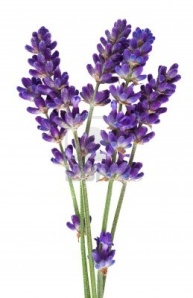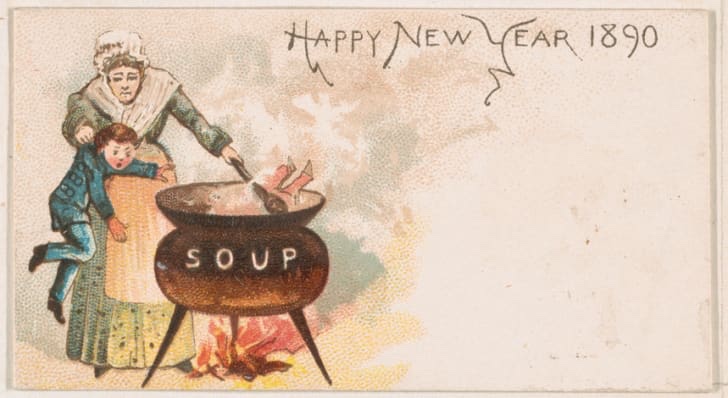Lavender, one of the most beloved of herbs, has been is use for more than 2500 years. The Romans are credited with naming this most aromatic of herbs, some say because of its use in washing (lavare), but others believe it derives from “livendula” (bluish.) I’m inclined to favor the latter theory. In ancient Greece and India, and also in the Bible, this plant is called spikenard.
Although today, lavender is strongly associated with England , it is not native to northern Europe, but to the warmer climate of the Mediterranean. Originally, it was probably put under domesticate production in Arabia. In Egypt, Phoenicia, and Arabia, lavender was used as a perfume and for mummification. It spread from Greece into Europe around 600 BCE. The Romans made use of it in their elaborate baths. By the early middle ages, washerwomen were known as lavenders, for spreading clothes to dry upon the bushes and for scenting clean clothes in storage. It was during the the same eras that monasteries began cultivating lavender in their “physic gardens”. Hildegard von Bingen made lavender water, a mixture of lavender and gin or brandy, as a remedy for migraine.
 Much of the folklore surrounding lavender is ancient. Cleopatra is said to have worn its scent (her secret weapon!) to seduce Julius Caesar and Marc Antony, and some claim that the asp that delivered that fatal bite was hidden among her lavender bushes. Adam and Eve are credited with bringing the plant with them when expelled from the Garden of Eden. The Bible also tells us that Judith wore perfume containing lavender to charm Holofernes before killing him, and in the Gospel of Luke, Mary washes the feet of Jesus and anoints them with ointment containing spikenard, one of its other names. According to one story, lavender got its scent from the clothing of Jesus when his mother hung his clothes on a bush to dry. Many Christians crafted crosses with it to ward off evil.
Much of the folklore surrounding lavender is ancient. Cleopatra is said to have worn its scent (her secret weapon!) to seduce Julius Caesar and Marc Antony, and some claim that the asp that delivered that fatal bite was hidden among her lavender bushes. Adam and Eve are credited with bringing the plant with them when expelled from the Garden of Eden. The Bible also tells us that Judith wore perfume containing lavender to charm Holofernes before killing him, and in the Gospel of Luke, Mary washes the feet of Jesus and anoints them with ointment containing spikenard, one of its other names. According to one story, lavender got its scent from the clothing of Jesus when his mother hung his clothes on a bush to dry. Many Christians crafted crosses with it to ward off evil.
A natural insect repellant, lavender was pressed into use as a plague antidote , worn in bunches tied to one’s wrists. (It probably repelled the fleas whose bites caused plague.) After robbing graves, thieves washed up with a concoction called “Four Thieves Vinegar”, to protect themselves from contagion. In France, it was noted that glovers, who perfumed their products with the herb, never contracted cholera. In the New World, the Quakers were the first to cultivate and sell lavender.
European royalty made lavish use of lavender in perfumes and foods. It has long been associated with love. In Tudor times, young maidens would sip on lavender tea and say, “St Luke, St Luke, be kind to me. In my dreams, let me my true love see.” Alpine girls would tuck some lavender under their lover’s pillow to foster romantic thoughts; once married they would put some lavender under the mattress to ensure marital passion and avoid quarrels. In England during the 1670’s, a love song emerged that survives in varying forms to this day:
Lavenders green, Diddle, diddle, Lavenders blue
You must love me, diddle, diddle, cause I love you,
I heard one say, diddle, diddle, since I came hither,
That you and I, diddle, diddle, must lie together.
The modern version can be heard here.
Because of lavender’s purported ability to repel evil, it was (is) often used, especially as incense, around Midsummer’s Day, in conjunction with St. John’s Wort. Cleopatra notwithstanding, girls who wore lavender sprigs on their persons were supposed by be well able to preserve their chastity. In magic, witches are said to prize the herb for its ability to increase clairvoyance, and a mixture chamomile , lavender, mugwort, and rose petals will attract sprites, fairies, brownies, and elves.
Lavender has brought color and fragrance into our lives since time immemorial. Today there are over 115 species cultivated all over the world, and lavender products are inexpensive and readily available. Bring the charm of this ancient plant into your own life.


 on a branch or twig where birds had left droppings. “Mistel” is the Anglo-Saxon word for “dung,” and “tan” is the word for “twig”. So, mistletoe means “dung-on-a-twig”. By the sixteenth century, botanists had discovered that the mistletoe plant was spread by seeds which had passed through the digestive tract of birds. One of the earliest written references to this appeared in England, in 1532, in a Herbal published by Turner. Botanists of the time also observed that the sticky berry seeds of the mistletoe tended to cling to the bills of birds. When the birds cleaned their bills by rubbing them against the branches or bark of trees, the the seeds were further scattered.
on a branch or twig where birds had left droppings. “Mistel” is the Anglo-Saxon word for “dung,” and “tan” is the word for “twig”. So, mistletoe means “dung-on-a-twig”. By the sixteenth century, botanists had discovered that the mistletoe plant was spread by seeds which had passed through the digestive tract of birds. One of the earliest written references to this appeared in England, in 1532, in a Herbal published by Turner. Botanists of the time also observed that the sticky berry seeds of the mistletoe tended to cling to the bills of birds. When the birds cleaned their bills by rubbing them against the branches or bark of trees, the the seeds were further scattered.








 (via
(via 

